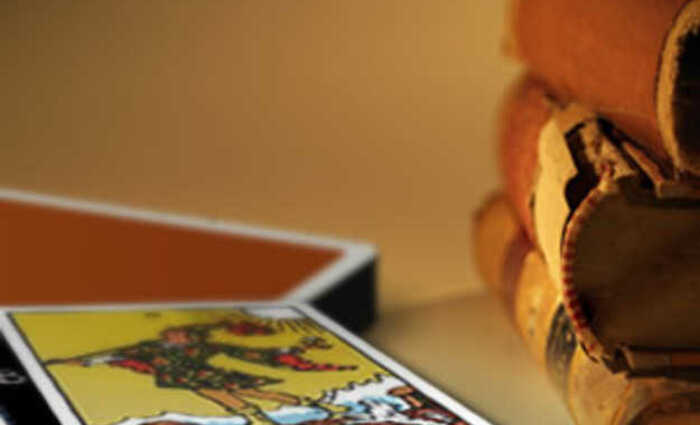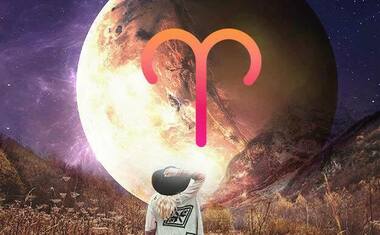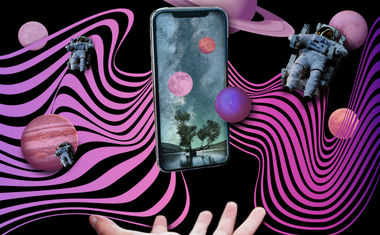
The Major Arcana Traditions
Over the years,friends have asked me in the course of compiling important minutiae of a comprehensible Tarot history, "Isn't this a bit too encyclopedic for the average Tarot user to care about?"
In most cases, authors have focused on one deck or, at most, one family of related decks in an effort to keep the material within one volume. They generally have not included scores of decks that are equally, if not more, interesting because they do not fit the pattern modelled by their "primary" deck.
A particularly daunting factor for the modern researcher consulting the Tarot "experts" of the early twentieth century has been the chorus of official voices saying "Tarot has no real history. Don't even bother to look up previous generation's masters. The decks were all pretty generic before Eliphas Levi decided to make up correspondences between the Major Arcana and the Hebrew alphabet." Evidence proves that nothing could be further from the truth, but because it is scattered across multiple disciplines, requiring much cross-checking, it has been easier to trust the "experts." Those turn of the century savants put up such a wall of denial about the origins of the Tarot that it has taken nearly a century for us to get over it!
In 1978, Stuart Kaplan published his first Encyclopedia of Tarot. As a result, anyone who did not travel or read outside the English language could finally have access to the Continental Tarots. The English family of decks are still the most available in America, but Mr. Kaplan staunchly keeps many Tarots available from all branches of the tradition in his U. S. Games Systems catalog. It is due to his commitment to providing a wide selection of decks for the American market that a person like myself can undertake a project like this one. Eternal gratitude goes out to him.
Because of these two situations--the lack of European Tarot decks circulating in the English- speaking world and the stonewalling by the "experts" of the early twentieth century-- there have been numerous fads and styles of Tarot recently emerging that have little or no grounding in actual Tarot history. Most of these come from sources honest enough to admit that they are reinterpreting tradition, or departing from it entirely, without making inflated claims about the "authenticity" of their versions. However, some Tarot creators have played fast and loose with history to add cachet to their decks (and books about them). This phenomenon frustrates the sincere student who wants to understand the origins of Tarot. Various partisan groups, each with their hallowed interpreters, disavow other interpreters within the ebb and flow of countless variations. How can we unravel the threads?
We can start by making a historical scan of the Arcana. In the Tarot Magic CD-ROM, Visionary Networks included a representative range of European historical Tarot decks, with relevant commentary and divination support, so both the new and ongoing student of Tarot would have the fundamentals close at hand. The present revival of Tarot deserves to be supported with creditable information drawn from the message of the images themselves. To do this involves interpretive risks that an encyclopedist normally would not allow herself to make.
However, in face of necessity, I have not departed from material that is on the faces of the cards for all to see. With this approach I hope to level the playing field beneath the feet of the modern competing versions and schools of Tarot. I realize that this will result in a much greater emphasis upon the European Tarot decks than on the modern English-style decks that Americans and the British are so fond of, but that will be balanced in our upcoming CD, in which we will showcase the decks of the pivotal early decades of the twentieth century. This first presentation is about the history of Tarot, and we hope it will assist modern Tarot students to have a larger frame of reference to refer to, as they compare and contrast the esoateric frameworks inherant in their Tarot decks.
Lest we forget for a minute the value of these images and their related teachings, let's review the context in which Tarot was being explored in the centuries of its crystallization. It rested upon, and contained images from, a rich seedbed of ideas and images retained from the mixing of classical and pagan societies of Europe, Africa, the Near and Far East. Astrology, sacred geometry and Kabbalah were already very old by this time and fully exposed to each other. The symbolic grid that related the cosmos to humanity, and both to the world of Nature, had been taught in the sacred universities from their founding by Alexander the Great until the beginning of the Renaissance.
Petrarch's famous fourteenth century poem Triumphi names six of the Arcana as stages of the mythological travails of Petrarch and Laura, his idealized and unconsummated love. Gertrude Moakley, in her study of the decks from the Bembo family workshop (a popular and prosperous artistic cooperative of the 1400s), thinks this poem served as inspiration for the Tarot, as it certainly did for the yearly Mardi Gras-like costume parades in which Italian nobles of the early 1400s played out the themes of the Triumphi. But we know from the history of art in Europe that the images of the Triumphi were in the public domain for centuries already, many integrated into official Church teachings because of their shared origins in Greek and Roman culture. Coincidentally or not, the Visconti Tarots began emerging in 1440, with the Mantegna archetypes following right along in 1465. As Kaplan makes apparent in his Encyclopedia, there seems to have been a conversation going on between the creators of these two original streams of Arcana, because certain images from one echo the other so closely. There also exists a codex in the Vatican from 1471 with twenty-two Major Arcana (Visconti-style) that are obviously derivative of the Mantegna images in the art. These clues seem to indicate a high-level dialogue between both ordained and lay esotericists who were roughing out a consensus version of something they all knew in common, but possessed in differing versions.
A century of rumors about cards and their use pre-dates the first Bembo deck, as documented by Kaplan in Volume 1 of his Encyclopedia. I am inclined to think that the return of the Hermetic texts to Europe over the course of the Renaissance brought the prototypes of the Alexandrian Arcana into the hands of the Continental metaphysicians. The Renaissance artists then refashioned the ideas to look and feel European, throwing out the symbolism that required a literate person to translate it. The result is the Marseilles stream of Tarot. Then two more centuries passed before the actual text and images became publicly available to "rectify" the traditional decks with the Alexandrian ideas again in the late 1800s. This is the conclusion reached by Oswald Wirth in his little booklet, Introduction to the Study of Tarot, and to judge by the character of the esoteric Tarot by Manly P. Hall and Augustus Knapp, one could not help coming to the same conclusion.
Don't let the fact that there were Tarot images in the Vatican lull you into thinking that students of the Arcana had a warm relationship with the external Church. This was the period when Rome finally managed to get astrology permanently banished from the ancient canon of the classical university curriculum in Europe. People were being imprisoned, tortured and sent to their deaths for being involved with groups who used these images. In particular, during the Cathar and Albigensian rebellions of the thirteenth century, the papermakers used heretical symbols (such as the intricate Grail cup shown as the Ace of Wands in the earliest decks) as their watermarks, risking persecution but unequivocally stating their politics. The Catalans of Spain used astrological symbols as trade logos in their businesses as well, and these same symbols show up on the very first Spanish Tarot decks (see Fournier's Catalog of Playing Cards, Volume 2, p. 9). Does it not seem natural then to think that teachings and beliefs repressed in one form might come up in another? Generations of souls lived and died for these images that you might have them to contemplate and meditate upon in this century. We do not want to be guilty of taking this hard won legacy from the philosophers of antiquity for granted!
This compilation of the Arcana has been arranged chronologically, so the reader can more easily visualize the unfoldment of the ideas inhabiting the Arcana in the minds of the Tarot illustrators and their teachers. Generally speaking, even though the Tarot had a roughly standard form from its appearance, each Arcanum (letter/title/number/sign or planet) was likely to have several different versions appear in the 1400s and 1500s. But by the 1600s, a standardizing force had appeared, which we explore in the Major Arcana essay and the essay on the Continental Tarot decks. Another wave of creative proliferation hap-pened between the late 1700s and the late 1800s, as overt esotericism replaced the veiled magical references of previous centuries. It is this progression which you will read about in these essays.
Over the years, even with my growing collection of decks and books, most notably Kaplan's Encyclopedia, I became increasingly convinced that there must be certain places I should look to get "insider information" that was not in the public domain. This is why you will find an essay among the others on the bookshelf by my dear friend and ordaining Bishop, Dr. Lewis Keizer. He can speak as a scholar of the Mystery Schools, and as an initiated member of both the Martinists and the Order of the Golden Dawn. Dr. Keizer and I share a compelling interest in the cultivation of effective tools for operational magic and organized self-cultivation. Those who are similarly inclined will want to further investigate the means by which the cards leave prediction behind and enter into the domain of self-cultivation. This approach leads directly back to the mind-set originally shaping the cards at their inception in Europe, widening the significance of Tarot to address the perennial quest for redemption, healing and transcendence.
When choosing the Tarot decks for the divination section of the Tarot Magic program, we had certain technical limitations. Images take up much more space in the CD format than does text. Therefore, for these essays, I did not hold myself to just those Tarots. I looked at every image I could get my hands on and commented on every one that seemed relevant. Nevertheless, I will have missed some, and I hope to hear from my readers about that.
My greatest frustration is that we cannot show each version of each card mentioned in the text. This is a case in which a picture is truly worth a thousand words. Because of this, you will enjoy this essay to the fullest if you have access to Stuart Kaplan's Encyclopedia of Tarot, Volumes 1 and 2, as nearly all the Tarot decks cited in this essay are illustrated there. A great resource for color and detail in the classical Tarots is the Tiny Folio called The Art of Tarot by Christina Olsen, published in 1995 by Abbeyville Press Publishers in New York.
Read more exerpts from The Underground Streams: Esoteric Tarot Revealed:
History of Tarot | Esoteric Origins of Tarot | Criteria for Esoteric Tarot | The Gnostic Tarot | Kabbalah | Confluence | Continental Tarots | Spanish School | The English School | Major Arcana Theory | Minor Arcana | Major Arcana Cards | Coins | Cups | Swords | Wands



